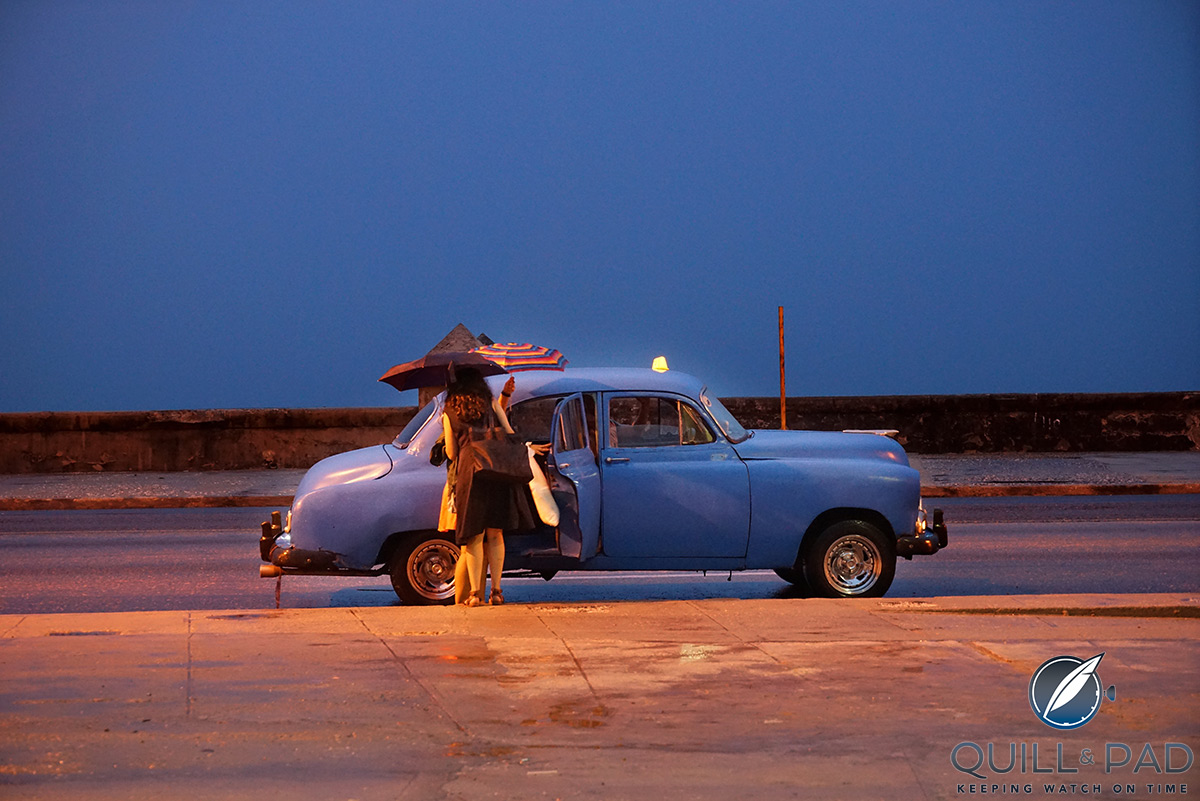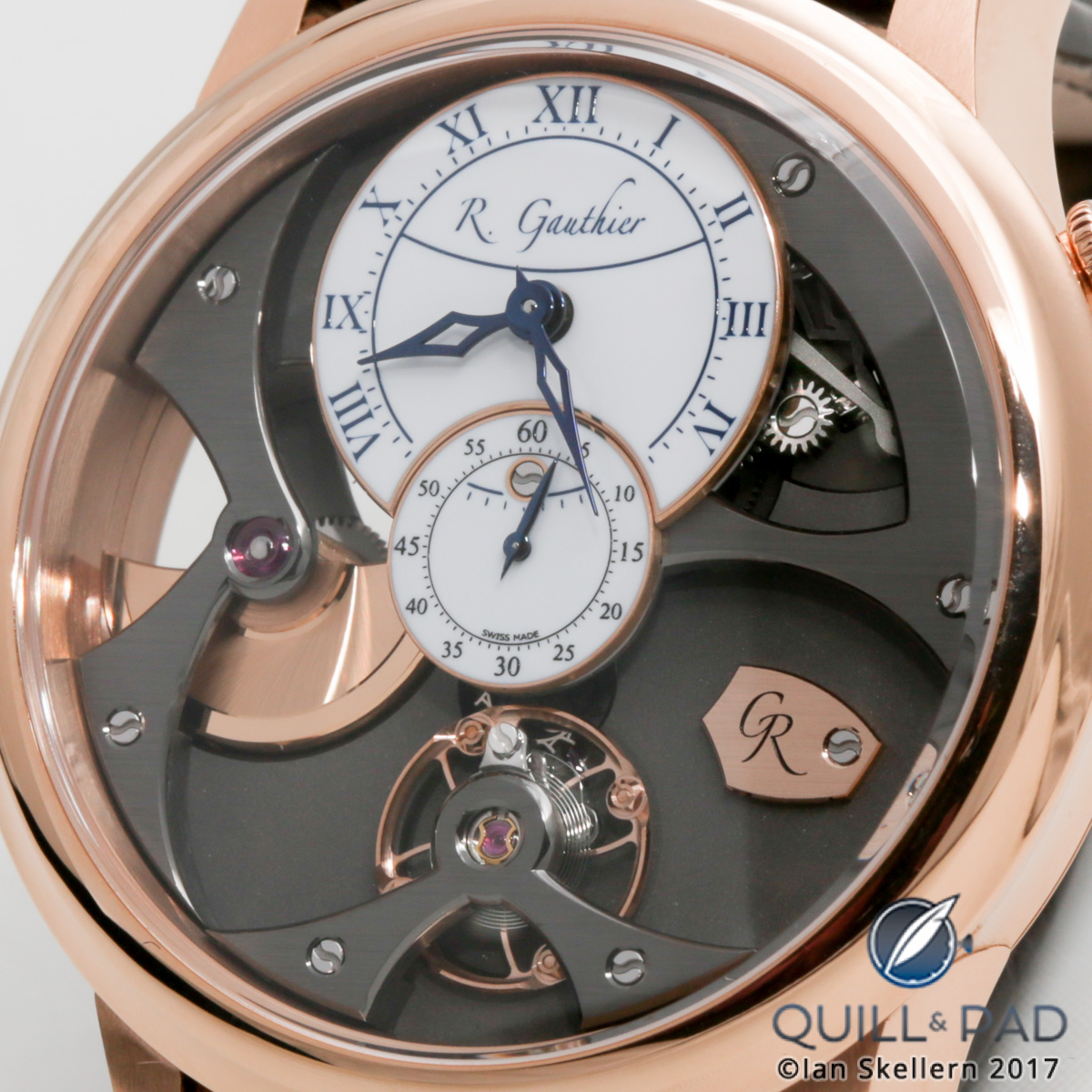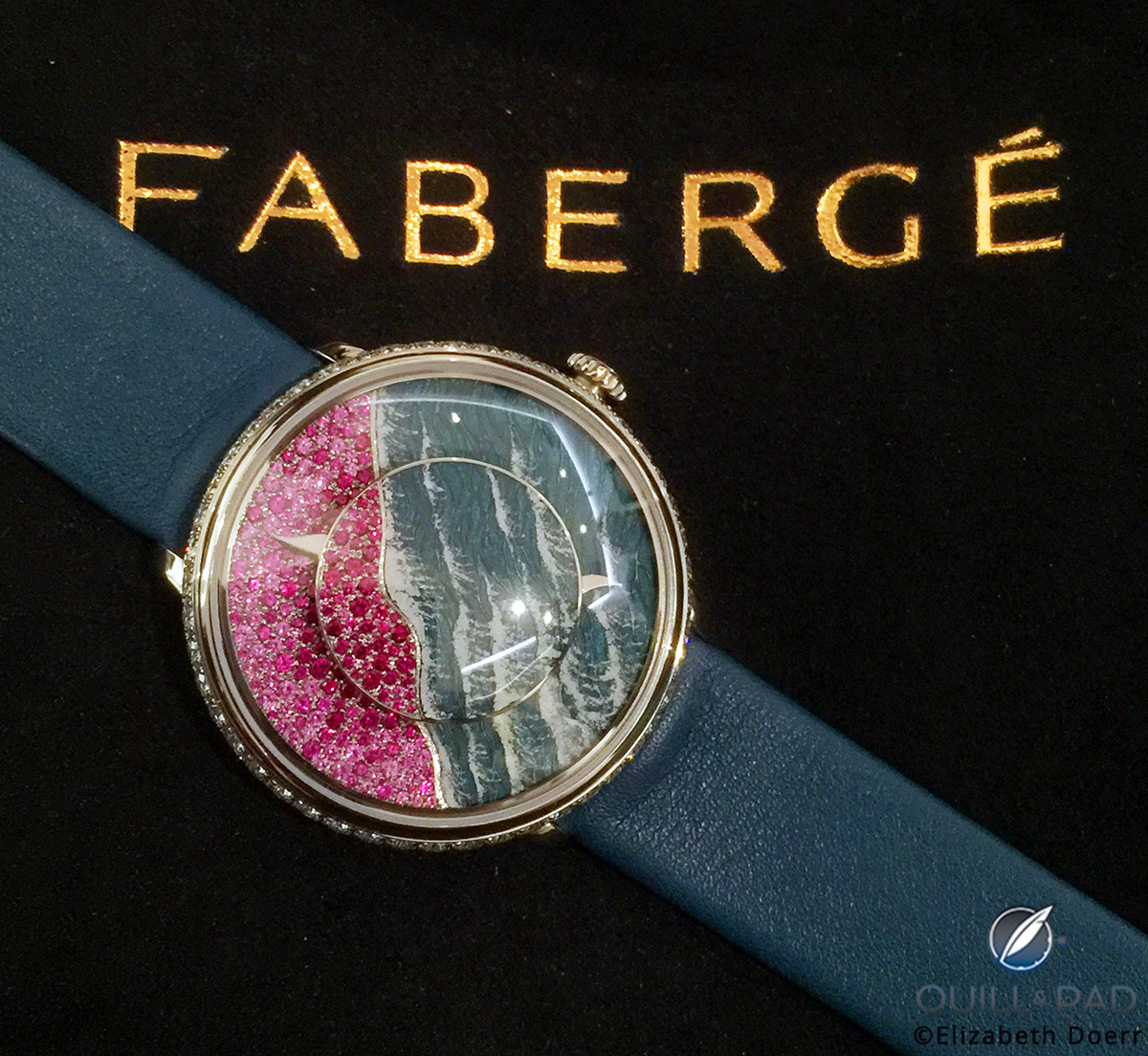
Three is a number full of symbolic power: good fortune in numerology and a divine number that can also stand for the holy trinity or life itself (as in birth, life, death). In tarot teaching, three is the card of the Empress, the birthing of true wisdom.
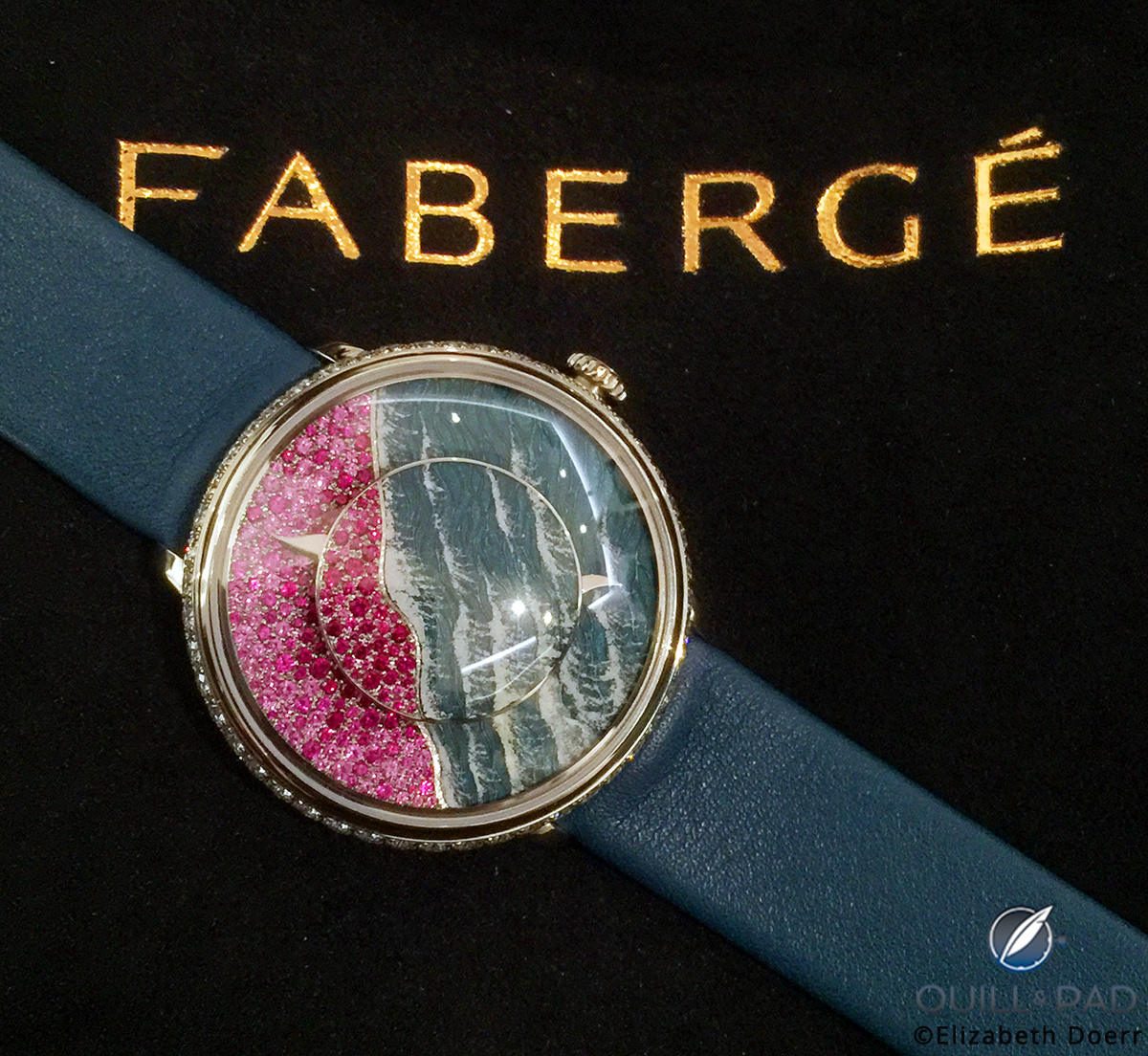
Fabergé Lady Libertine III
Fabergé’s Lady Libertine III is three times lucky in that a trio (or troika, if we wish to allude to Peter Carl Fabergé’s Russian origins) of exceptional women −Aurélie Picaud, Fiona Krüger, and Anita Porchet −have found unity in working on this exceptional timepiece, which is just bursting with talent, skill, and love of the craft.
Picaud is, of course, Fabergé’s director of watches. Porchet is the most well-known and talented enamel artist working in watches today (see The 2015 Gaia Awards: Giulio Papi, Anita Porchet, And Jonathan Betts Honored). And Fiona Krüger is a young Scottish designer living in France, who has developed her own boutique brand (see Fiona Krüger’s Celebration Skull: Life, Death, Mortality . . . And Watches).
Man in the middle: Jean-Marc Wiederrecht
And there is of course one man in the middle, a humble guy who appreciates working with talented women more than any man I have ever known: Jean-Marc Wiederrecht of Agenhor.
Wiederrecht knows – just as these three women know – that a magical dial deserves so much more than an off-the-rack movement. And so the Lady Libertine III is powered by a completely new movement that Wiederrecht and his team at Agenhor developed. The movement has an empty space in the center that can be filled with an artistic, technical, architectural element, or a blend of all three (there’s that magical number again).
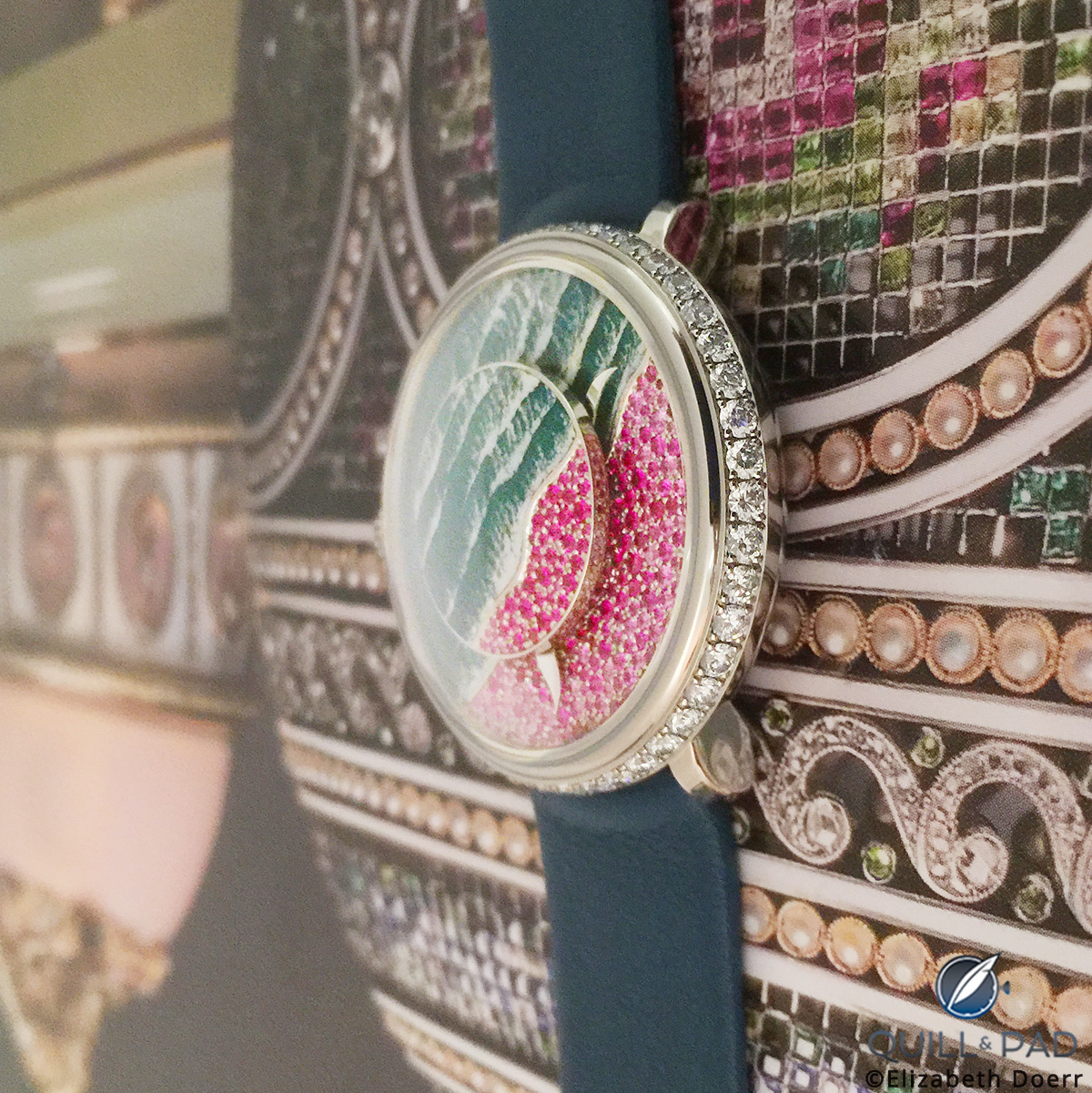
Fabergé Lady Libertine III
This concept is easily visible in Fabergé’s Visionnaire DTZ and Agenhor’s brand-new AgenGraphe chronograph caliber; though these two are bigger movements able to include more complication, the basic philosophy is the same.
Wiederrecht’s Caliber AGH 6911 accommodates stylized minute and hour indicators in the form of waves, which revolve around a raised element from the center. You might recognize these features from 2016’s exquisite Lady Levity (see Fabergé’s Lady Levity Combines Original Mechanics With Unique Design).
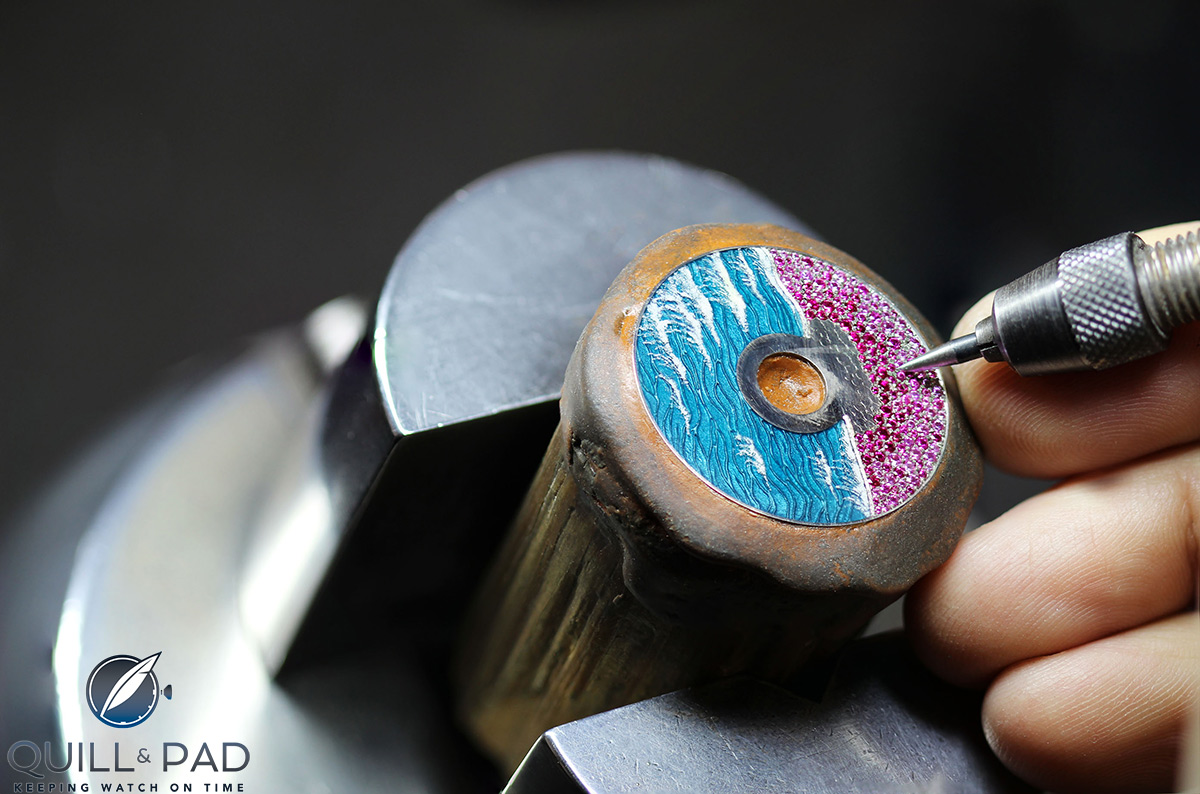
Making the dial of the Fabergé Lady Libertine III
The design
Krüger, the designer of this dial, drew inspiration from the vivid colors and earthy origins of the Gemfields rubies mined at the Montepuez mine in Mozambique. Gemfields is Fabergé’s parent company.
Krüger explains her inspiration, “I lived in South Africa for three years before moving to Switzerland to do my MA. And although I never managed to visit Mozambique itself, the maverick spirit of southern Africa is incredibly powerful and was part of a mood I wanted to capture in this piece.
“When my South African friends and family talk about Mozambique, the first thing they describe is the incredible landscape: beautiful blue water, soft white sand, and red earth,” Krüger continued. “This vivid color palette was the perfect starting point for the design. The image looked to me like a beautiful abstract painting: the deep blue ocean was my canvas broken up by the silvery-white brush strokes (waves), all divided by a bold (coast) line down the middle of the image, holding back a rich red landscape.”
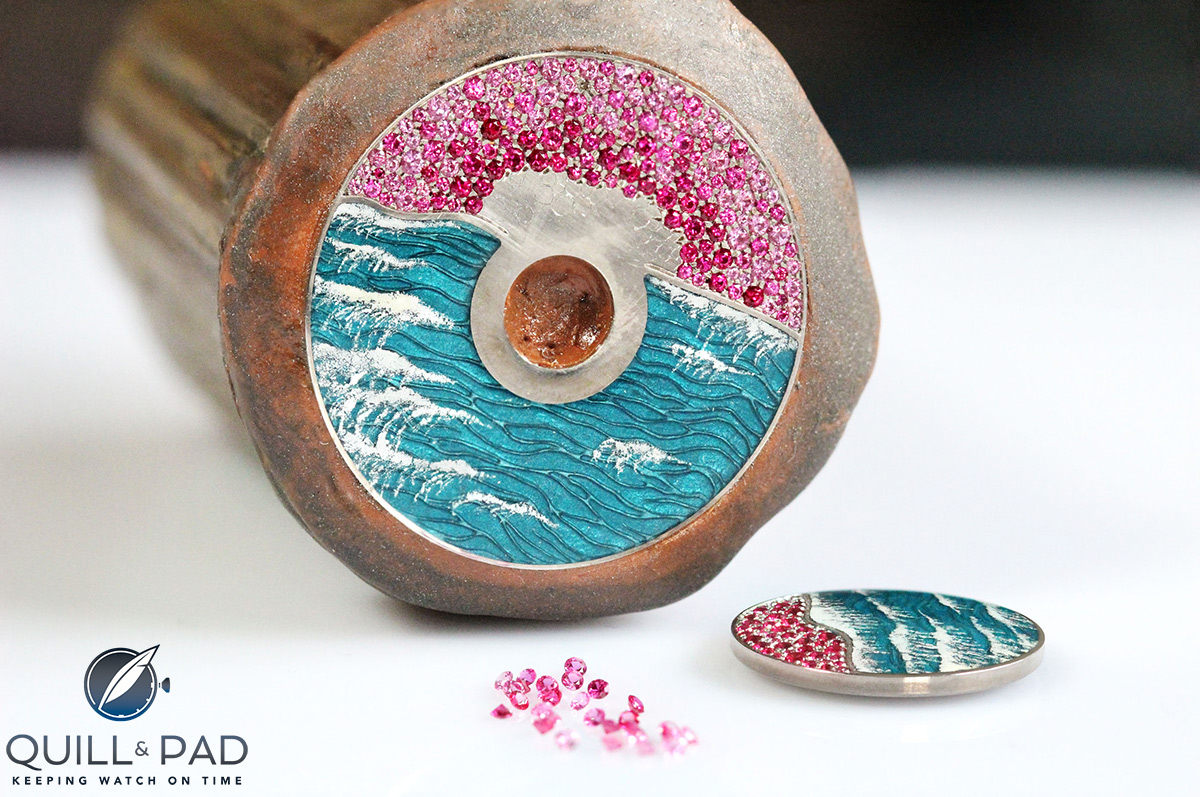
Dial of the Fabergé Lady Libertine III
Fabergé’s history is chronicled in the creation of colorful objets d’art, one culminating in 2106’s Lady Libertine I (see that in Fabergé & Gemfields’s Vertical Integration Results In Colorfully Synergistic Lady Libertine I), a timepiece that also pays homage to an African landscape in which Gemfields mines its precious gems: emeralds from the Kagem mine in Zambia.
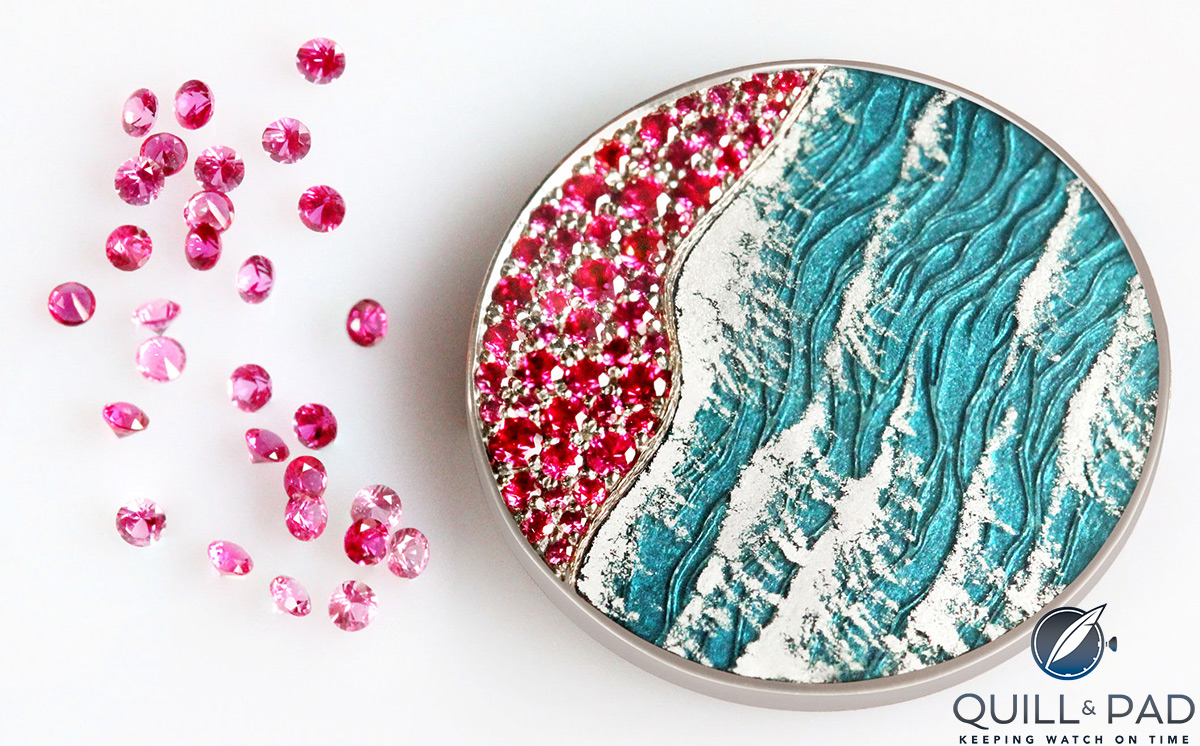
Dial of the Fabergé Lady Libertine III
“Fabergé’s long history of playing with color was something that immediately resonated with me when thinking about this design,” said the 31-year-old designer, who looked into existing artworks by famous painters that used a limited color palette. “The contrast between the colors and how they are used creates the tension and beauty in their work. This was the approach I took with the design – thinking of the watch like an abstract painting, playing with colors, textures, light, and shade to create an emotive piece inspired by the bold Mozambican coastline.”
Krüger wanted to use traditional techniques from the history of horology to “paint” the abstract landscape. “Engraving gives the dial a sense of movement, like the ocean, while enamel captures the depth of the blue color. A top layer of hand-painted silver enamel brush strokes punctuate the blue, and the silver catches the light like the top of a wave on a sunny day,” she described the scene.
“It was important to see the enamel artisan’s touch in the waves, like you would see an artist’s brush stroke in a painting,” Krüger continued. “The dial is divided in two by a graphic white gold line, which holds back a terrain of gradient red stones going from dusty pink sapphires to deep red rubies, which take center stage at the heart of the piece. The shape of the hands reflects the coastal inspiration behind the dial design.”
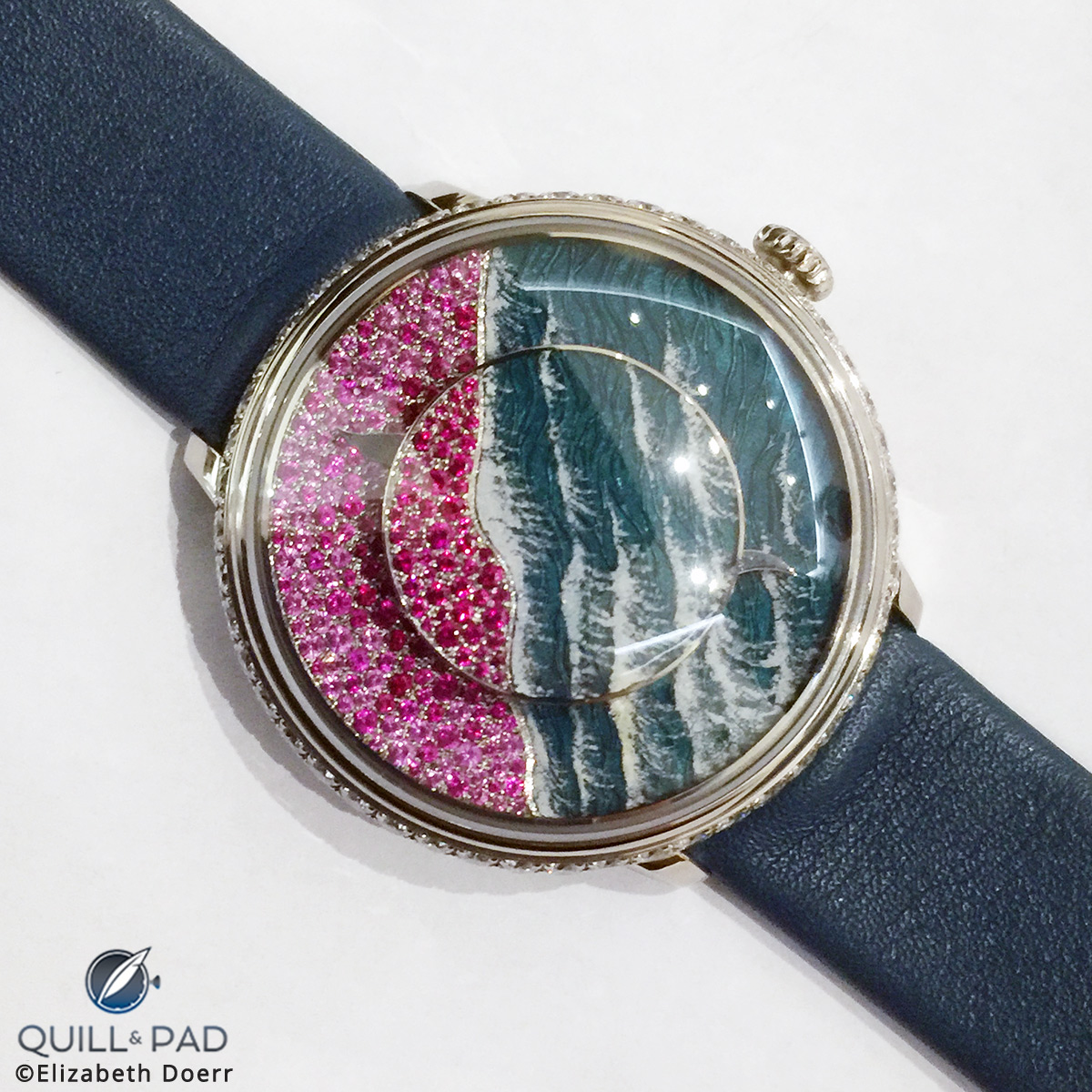
Fabergé Lady Libertine III
Anita Porchet, the premier enameller of our era, painted the enchanting ocean with turquoise-colored enamel over guilloché metal. Her silvery-white breaking waves are so skilful they could almost originate in a realistic painting.
On the collaboration
Picaud once again proved her amazing eye for mechanical beauty with this collaborative timepiece.
“When I was approached to do the collaboration with Fabergé, I was delighted – in such a short time Aurélie has taken what is a very well-known brand and managed to do something unexpected and extremely high quality with its watches,” Krüger continued.
“When I design a watch, it’s a combination of a desire to be innovative and to challenge traditional haute horlogerie whilst still upholding its integrity. When you do that, the resulting products are incredibly powerful, and this is only possible through collaboration with the best artisans, watchmakers, and technicians in the industry. This is a philosophy I felt strongly at Fabergé, a brand with an incredibly rich creative heritage, which I could delve into for the project.
“This has been a true collaboration in every sense of the word. From talking over the designs to looking at samples and test pieces, the whole process has been really inclusive, and I think that’s ultimately what results in the best product.”
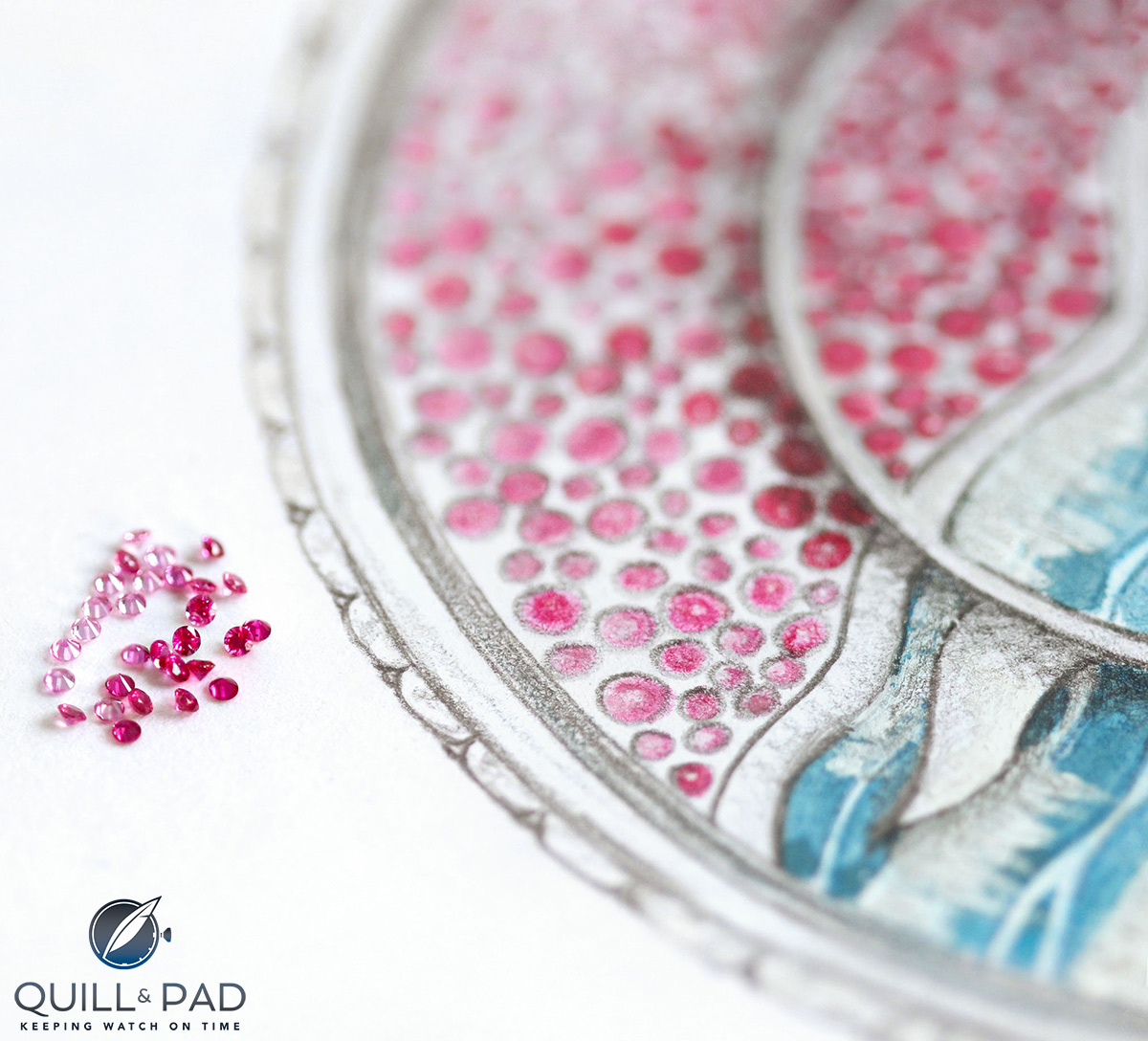
Fabergé Lady Libertine III
Having known Porchet for some time – and continuously in awe of her steadfast talent – I was also curious to know how collaborative the work between designer and enameller was.
“I wanted a specific look to the enamel work on the dial: not a copy/paste photo-realistic painting of the Mozambique coastline, but a more abstract interpretation of this,” Krüger continued. “I went to see Anita and brought my sketchbook to really explain the feeling I was trying to achieve: I explained that I wanted to see the brush marks in the waves, like seeing the artist’s touch on a canvas. We tried white enamel initially, but I asked her to do some tests with silver. She was a little unsure initially, but she did some test pieces, and they were exactly what I had imagined.
“It’s a testament to her skill as an artisan that from my sketches, reference images, and one clear discussion she completely understood what I was trying to achieve. Technically using the silver enamel also proved a challenge as the color can sometimes change during the heating process, but she found a way to manage that and in doing so discovered a new way of working with it, which is fantastic!”
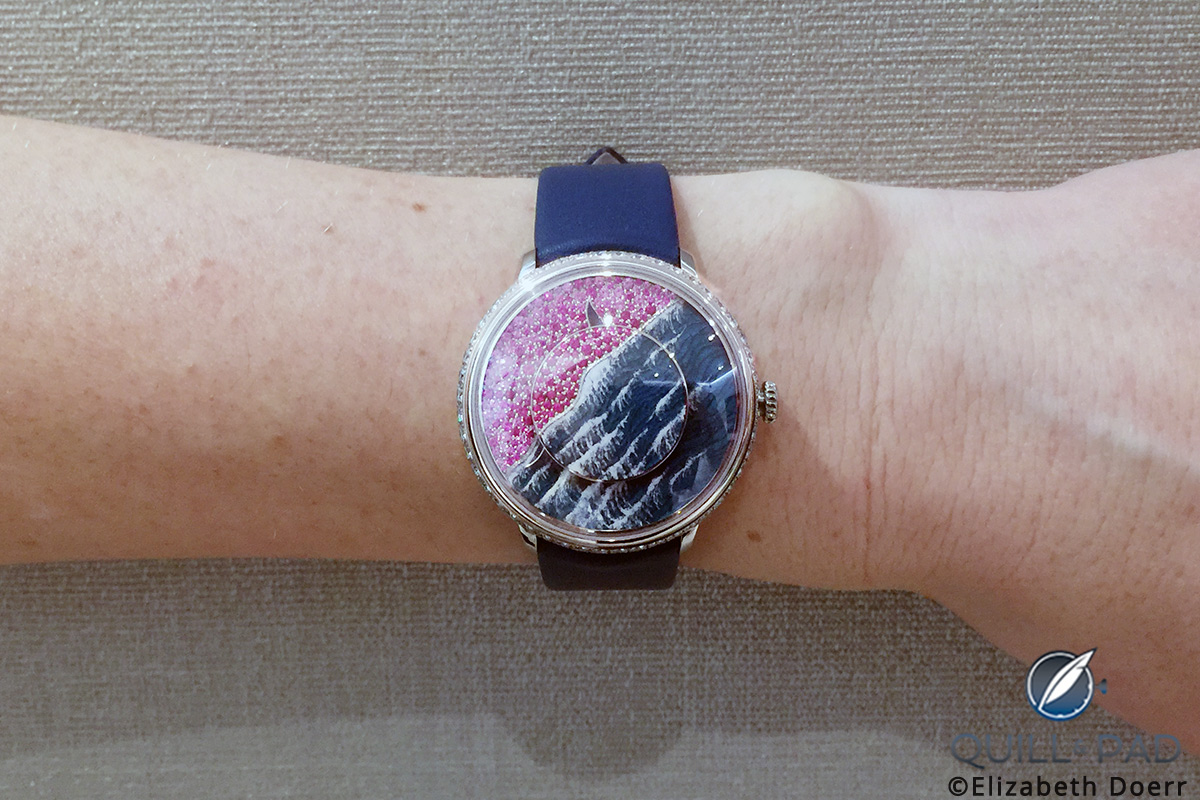
Fabergé Lady Libertine III on the wrist of Aurélie Picaud
As a tribute to art, artisans, and the power of three, this timepiece could represent a new beginning. We can only hope!
For more information, please visit www.faberge.com/category/100_ladies-timepieces.
Quick Facts: Fabergé Lady Libertine III
Case: 36 x 12.07 mm, white gold with 86 brilliant-cut diamonds (1.84 ct)
Movement: manually winding Agenhor Caliber AGH 6911 with 50-hour power reserve; AgenPIT regulation system for balance adjustments
Dial: snow-set rubies and pink sapphires, hand-enameled guilloché dial
Functions: hours, minutes
Price: 110,000 Swiss francs
